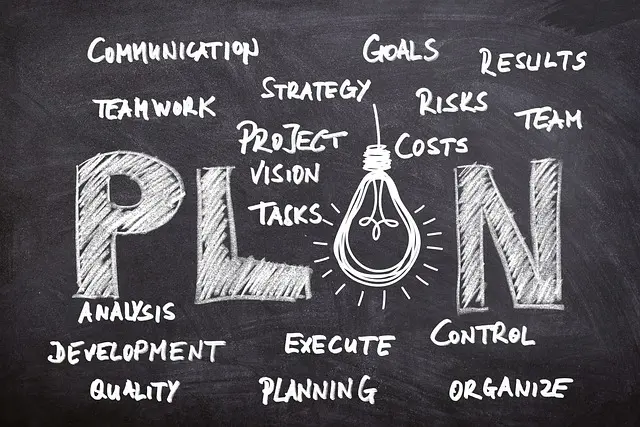
Getting a scholarship can significantly ease the financial burden of higher education. One of the most crucial parts of the scholarship application process is crafting a compelling personal statement. This essay gives applicants a unique opportunity to tell their story and stand out from the crowd. Below, we’ll explore various strategies to write a winning personal statement for scholarship essays.
Understand the Prompt
Before starting a personal statement, it’s essential to thoroughly understand the prompt provided by the scholarship committee. Applicants should take time to read the instructions carefully. Some prompts may ask for a description of career goals, while others might seek a discussion about one’s community service or cultural experiences. Knowing what the committee wants helps in tailoring the essay accordingly.
Brainstorming and Planning
Brainstorming is a critical first step. Jot down all significant experiences, achievements, and aspirations. Think about what makes one unique. Reflect on hardships overcome, lessons learned, and qualities developed over time. Once there’s a list of potential topics, it’s useful to create an outline, which can serve as a roadmap for writing the essay.
A solid outline should include an introduction, body paragraphs, and a conclusion. This ensures that the essay flows logically and covers all necessary points.
Captivating Introduction
A strong introduction grabs the reader’s attention immediately. It’s beneficial to start with a personal anecdote or a compelling statement that relates to the main theme of the essay. For example, one could begin with a story about a defining moment in their life that sparked their passion for a particular field of study.
Highlight personal achievements and strengths
The body of the personal statement should focus on highlighting the applicant’s achievements, strengths, and experiences. However, it’s important to be specific rather than vague. Instead of saying, “I have done a lot of community service,” one could say, “I volunteered 100 hours at a local food bank, helping to organize food drives and distribute meals to underprivileged families.”
Demonstrate Alignment with Scholarship Goals
Scholarship committees often look for candidates whose values and goals align with the organization’s mission. Make sure to research the scholarship and understand what they stand for. Highlight how past experiences and future aspirations align with the values and mission of the scholarship provider.
For instance, if applying for a scholarship aimed at future educators, demonstrate a passion for teaching, any relevant experiences, and how the scholarship will support this career path.
Show, Don’t Just Tell
“Show, don’t tell” is an essential writing rule, especially for personal statements. Instead of merely stating qualities or achievements, provide evidence through anecdotes and examples. For instance, rather than saying, “I am a hard worker,” an applicant might describe a challenging project they completed successfully, illustrating their diligence and commitment.
Addressing Challenges and Obstacles
Discussing challenges and obstacles can add depth to a personal statement. It’s important to show how these challenges were overcome and what lessons were learned. This demonstrates resilience and the ability to grow from difficult experiences. For example, an applicant might describe how they balanced part-time work and school responsibilities, developing time-management skills in the process.
Future Plans and Aspirations
It’s crucial to discuss future plans and career aspirations. Scholarship committees want to invest in candidates who have a clear vision for their future. Applicants should explain how the scholarship will help them achieve their academic and career goals. Be specific; rather than saying “I want to make a difference,” describe the areas or fields where the impact is aimed.
Conclusion
The conclusion should tie all elements of the essay together. It’s a good place to reiterate the main points and reinforce the applicant’s qualifications and passion. Ending with a strong note, such as a powerful quote or a call to action, can leave a lasting impression on the reader.
Revising and Proofreading
Once the initial draft is complete, revising and proofreading are crucial steps. Reading the essay out loud can help catch awkward phrasing and errors. It’s beneficial to seek feedback from teachers, mentors, or friends and to make revisions based on their suggestions. Proper grammar, spelling, and punctuation are vital, as they reflect the applicant’s attention to detail.
Avoiding Common Pitfalls
There are several common pitfalls to avoid when writing a personal statement. Firstly, applicants should avoid clichés and generic statements that do not add value or insight. Secondly, it’s important to stay within word limits while being concise and clear. Finally, honesty is key; embellishing or fabricating information can easily backfire.
Personal Voice and Authenticity
One of the most important aspects of a personal statement is authenticity. Applicants should write in their voice and be true to themselves. Authenticity resonates more with readers and can make a personal statement stand out. It’s better to be sincere and genuine rather than attempting to write what one thinks the committee wants to hear.
Reflecting on Life Experiences
Applicants should reflect on how their life experiences have shaped them as individuals. This reflection helps in understanding personal growth and development, which can then be articulated in the essay. For instance, participating in a significant extracurricular activity or project, and reflecting on what was learned, can show substantial personal and academic growth.
Research and Customize
Each scholarship may have different requirements and preferences. Therefore, it’s important to customize personal statements for each application. Researching the scholarship provider, understanding their values, and tailoring the essay can significantly increase the chances of success.
Leveraging Resources
Many applicants underestimate the resources available to them. High schools, colleges, and online platforms often offer numerous resources including writing centers, workshops, and mentors who specialize in helping with scholarship applications. Utilizing these resources can provide valuable insights and feedback.
Emphasizing Unique Perspectives
Everyone has a unique story and perspective. Emphasizing what sets one apart – be it cultural background, personal experiences, or a unique set of skills – can make the personal statement memorable. Highlighting these distinct attributes can differentiate an applicant from others with similar academic achievements.
Building a Narrative
Building a cohesive narrative throughout the essay can keep the reader engaged. Rather than listing accomplishments, weaving them into a story that flows naturally helps in creating a compelling read. Beginning with a problem or challenge, detailing the journey, and concluding with solutions or outcomes can make the essay dynamic.
Emotional Resonance
While maintaining a professional tone, it’s beneficial to evoke emotions in the reader. Scholarship committees often receive many applications, and those that can create an emotional connection stand out. Sharing heartfelt stories, struggles, and achievements can resonate on a personal level with the reader.
Attention to Detail
Little details matter in a personal statement. Paying attention to every detail, from the formatting to adhering to specific guidelines, shows thoroughness and dedication. It’s crucial to follow any specific instructions regarding font size, margins, and file types as non-compliance may lead to disqualification.
Practicing Patience
Writing a personal statement is a process that can’t be rushed. It requires patience to draft, revise, and refine the essay to perfection. Allowing time between revisions and having a fresh perspective can improve the quality of the writing substantially.
Getting Started Early
Starting the personal statement well in advance of the deadline provides ample time for brainstorming, writing, and revising. Procrastination can lead to unnecessary stress and a lower quality essay. Giving oneself plenty of time can also allow for thorough research and customization for each application.
Importance of Perseverance
Finally, perseverance is key in the scholarship application process. Not all applications will be successful, but each one provides a learning opportunity. Each personal statement written improves the applicant’s writing skills and chances for the next opportunity.
Conclusion
Crafting a winning personal statement involves understanding the prompt, highlighting achievements, aligning with scholarship goals, and maintaining authenticity. Through careful planning, reflection, and revision, applicants can create compelling essays that stand out. Utilizing available resources, customizing for each application, and emphasizing unique perspectives can also enhance the effectiveness of the personal statement.
In the end, a meticulously crafted personal statement not only boosts the chances of securing a scholarship but also provides an opportunity for personal growth and self-discovery. By approaching the task with patience, diligence, and sincerity, applicants can present their best selves and pave the way for future success.












